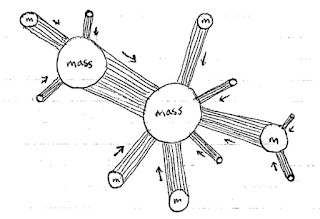Photo source: Wikimedia Commons
Oliver Heaviside (1850-1925) was an English electrical engineer and physicist best known for reformulating Maxwell's equations. Physicist George Francis Fitzgerald said,
"Maxwell’s treatise is cumbered with the debris of his brilliant lines of assault, of his entrenched camps, of his battles. Oliver Heaviside has cleared those away, has opened up a direct route, has made a broad road, and has explored a considerable tract of country. " (Review of Heaviside's Electrical Papers, 1893)The rest of this post is some quotes from Heaviside.
Maxwell's equations
"It took me several years before I could understand as much as I possibly could. Then I set Maxwell aside and followed my own course. And I progressed much more quickly… It will be understood that I preach the gospel according to my interpretation of Maxwell." (Quoted in Oliver Heaviside by Paul Nahin)
Mathematics
"In working out physical problems there should be, in the first place, no pretence of rigorous formalism. The physics will guide the physicist along somehow to useful and important results, by the constant union of physical and geometrical or analytical ideas. The practice of eliminating the physics by reducing a problem to a purely mathematical exercise should be avoided as much as possible. The physics should be carried on right through, to give life and reality to the problem, and to obtain the great assistance which the physics gives to the mathematics." (Electromagnetic Theory, 1893)
Theory
"The study of the theory of a physical science should be preceded by some general experimental acquaintance therewith, in order to secure the inimitable advantage of a personal acquaintance with something real and living." (Electromagnetic Theory, 1893)
"Theory always tends to become abstract as it emerges successfully from the chaos of facts by the processes of differentiation and elimination, whereby the essentials and their connections become recognised, whilst minor effects are seen to be secondary or unessential, and are ignored temporarily, to be explained by additional means." (Electromagnetic Theory, 1893)
Reality
"We do not dwell in the Palace of Truth. But, as was mentioned to me not long since, 'There is a time coming when all things shall be found out'. I am not so sanguine myself, believing that the well in which truth is said to reside is really a bottomless pit." (Electromagnetic Theory, 1893)
"There is no absolute scale of size in the Universe, for it is boundless towards the great and also boundless towards the small." (Quoted in On Growth and Form by D'Arcy Wentworth Thompson)

